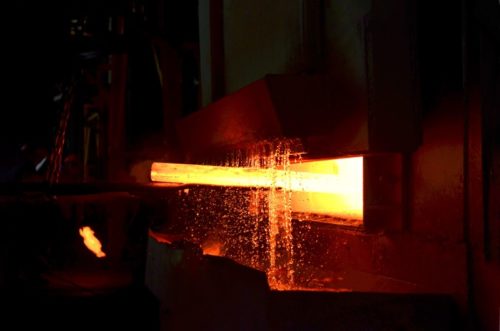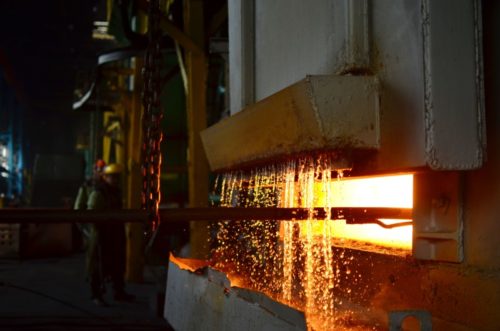
Heat treatment is a three-step process. First, the metal is heated to the specific temperature needed to bring about the desired change. Next, the temperature is maintained until the metal has been evenly heated. The heat source is then removed, allowing the metal to cool completely.
Steel is the most common heat treated metal but this process is performed on other materials:
- Aluminum
- Brass
- Bronze
- Cast Iron
- Copper
- Hastelloy
- Inconel
- Nickel
- Plastic
- Stainless Steel
Common Heat Treating Problems
When metals are improperly heat treated, the process can weaken or damage the metal. The most common problems can be avoided using proper quenching, proper tempering, vacuum furnaces, and molten salts.
. Brittleness
Metals that are improperly heat treated can become brittle, making them more prone to breakage and splintering. Brittleness occurs because too much heat was applied or heat was applied improperly. To avoid brittleness, the metal is tempered for a shorter amount of time or at a lower temperature.
. Warping
Warping and other deformations can occur because of uneven or unregulated temperatures during heat treatment or because the metal itself was improperly prepared and not suited for heat treatment. You can avoid warping by verifying the quality of the metal before beginning the process and properly raising, maintaining, and lowering the metal’s temperature during heat treatment.
. Cooling Fractures
Cooling fractures are most commonly caused by rapid cooling of the metal. To avoid cooling fractures, all tools are warmed prior to contact with metal being treated, and the metal is not overheated.
Types of Heat Treating
The four main types of heat treating are quenching/tempering, stress relieving, annealing, and case hardening.
. Quenching/Tempering
Typically performed on brittle metals such as steel, quenching and tempering is a two-part, closely monitored process involving the gradual heating and then rapid cooling of metal to change its strength, hardness, and ductility, often improving hardness to 600 BHN or more. When tempering and quenching, metals are heated in a furnace or other apparatus and then doused with oil or water to cool them off. Metals that have been quenched and tempered have rugged applications such as tractor buckets, trailers, storage tanks, and more.
. Stress Relieving
Stress relieving is used to minimize, or remove if possible, the internal stresses in metals, which naturally form stresses during machining and cutting processes. Normally applied after rough machining, stress relieving is performed by heating metal in a furnace (with protective gas if need be to protect from oxidation), soaking it for up to two hours, and then slowly air cooling it. Stress relieved metals can be found in a variety of applications, including cutlery, gears, tools, crankshafts, and more.
. Annealing
Often performed after a cold working or hardening process, annealing is primarily used to reduce the hardness of a metal and increase its ductility, improving the metal’s formability and machinability while also removing residual stresses. Metals are annealed by heating them in a furnace or other apparatus to above their recrystallization temperature (but not above their melting point), and then cooling them using a variety of methods depending on the metal and its intended use. Metals that have undergone annealing can be found in mining equipment, firearms, valve components, and more.
. Case Hardening
Case hardening can be performed using methods such as carburizing (infusing carbon into the surface of a metal) and nitriding (infusing nitrogen into the surface of a metal). In both methods, a metal is heated in a vacuum furnace and exposed to either carbon or atomic nitrogen. After exposure, the metal is rapidly cooled using oil or water. Metals that have undergone case hardening can be found in shackles, frying pans, girders, and more.
Quality Heat Treating Services
At Technox Machine & Manufacturing, we have a full-service machine shop that is ready to service all of your machining needs. For more information on heat treating services, please contact us or request a quote today.




